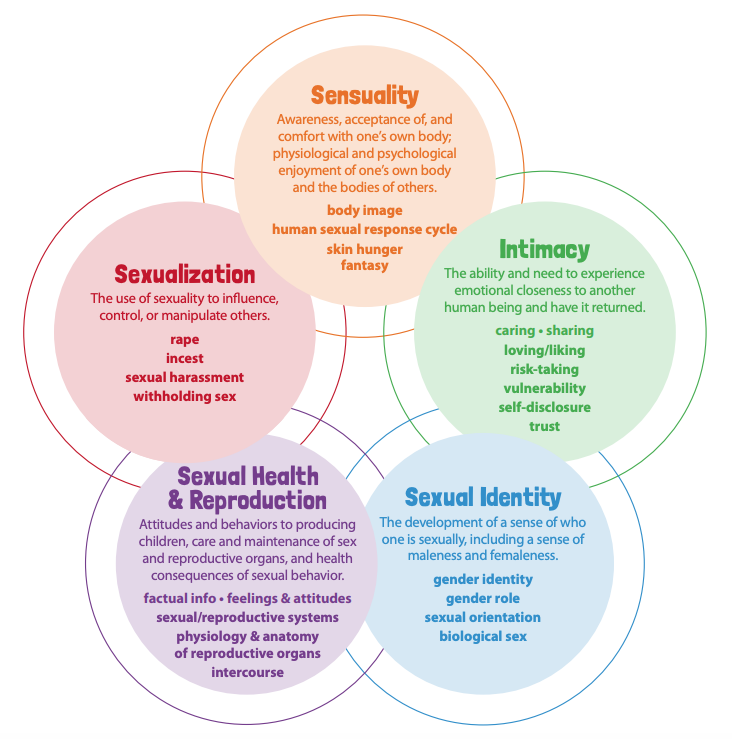
Circles of Sexuality
Circles of Sexuality
By: Riley Fortier, M.Ed.
CW: brief mention of sexual assault, rape, and incest

Source: PreventIPV
The circles of sexuality were created by Dennis Daily in 1981 to show a more holistic approach to sexuality. Daily created this model for a strengths-based approach to social work for client’s sexual wellbeing.
The “circles” or categories of sexuality are: sensuality, intimacy, sexual identity, sexual health and reproduction, and sexualization. The following categories and descriptions have been slightly adapted from Daily’s original 1981 framework.
Sensuality
Sensuality involves the level of awareness, acceptance, and enjoyment of our body or others. Sensuality can include things like:
- Skin hunger
- Visual or auditory stimuli
- Sexual response cycle
- Body image
- Fantasy
Intimacy
Intimacy is the degree to which we express and have a need for closeness with another person. Intimacy can include things like:
- Caring
- Sharing
- Loving/liking
- Risk taking
- Vulnerability
- Self-disclosure
- trust
Sexual Identity
Sexual identity is how we perceive ourselves as sexual beings. Sexual identity includes:
- Sex assigned at birth
- Gender identity
- Gender roles
- Sexual orientation
Sexual Health and Reproduction
Sexual health and reproduction relates to the attitudes and behaviors towards our health and those risks associated with sexual activity. Components of sexual health and reproduction include:
- Sexual behavior
- Anatomy and physiology
- Reproductive systems
- Contraception/abortion
- STIs (sexually transmitted infections)
Sexualization
Sexualization is how we use our sexuality or how our sexuality can be used against us. This can include:
- Media images/messages
- Flirting
- Seduction
- Sexual harassment
- Incest
- Rape
Why is this important?
Sexuality is typically viewed in a medical sense when it comes to therapy, counseling, and social work. But the medical aspect of sexuality is just one important piece in the sexuality puzzle. There are many factors that are a part of, and influence someone’s sexuality. In order to give the best care (or to receive the best care), it is important that a holistic or multi-faceted and intersectional approach is used.
Resources
https://www.health.state.mn.us/people/sexualhealth/circlesofsexuality.pdf
https://sexplainmethis.wordpress.com/2018/04/02/the-circles-of-sexuality/











